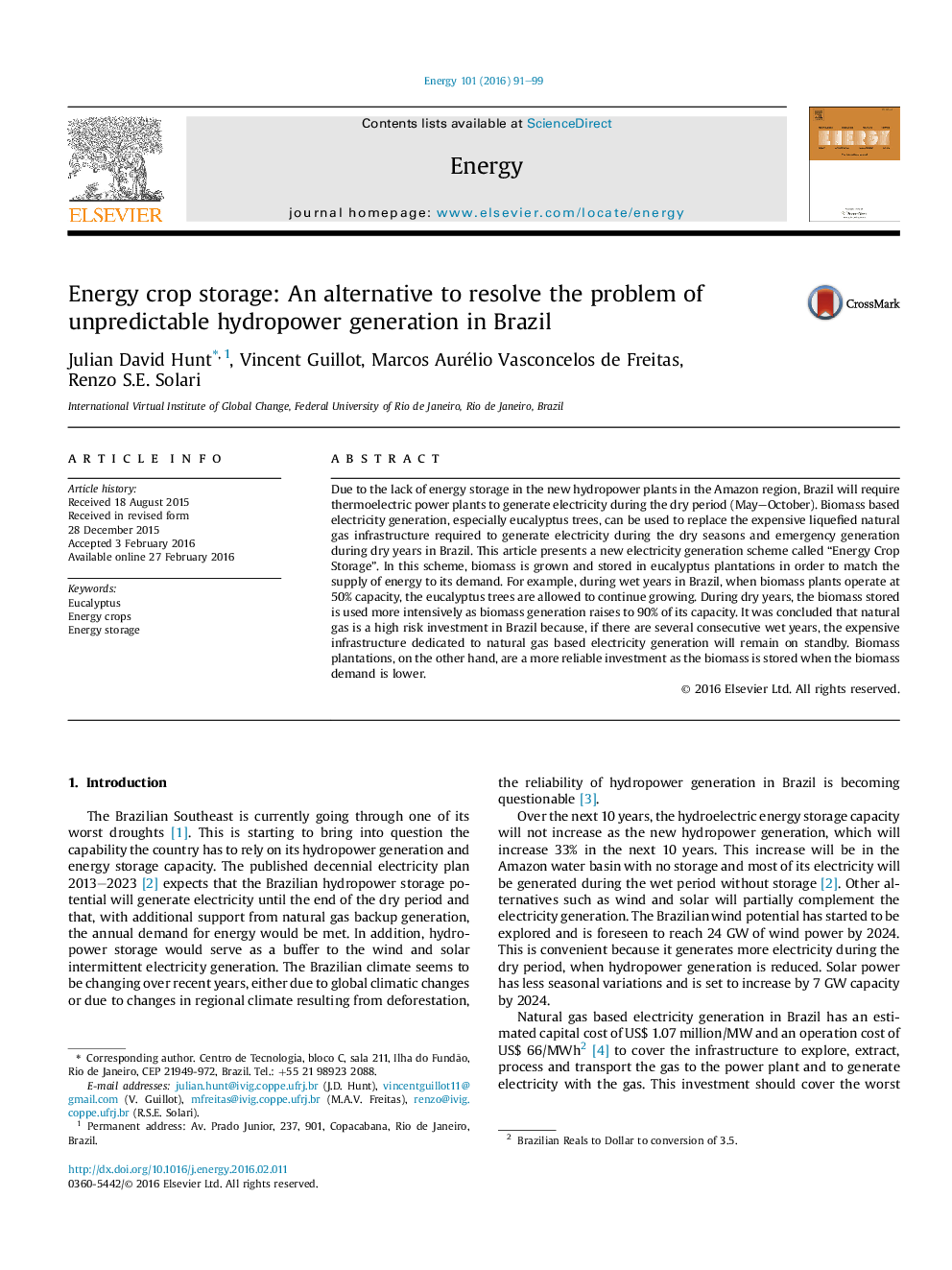| Article ID | Journal | Published Year | Pages | File Type |
|---|---|---|---|---|
| 1731014 | Energy | 2016 | 9 Pages |
•Brazilian needs for energy storage to complement seasonal hydroelectric generation.•Reduction in the production of paper and increase in biomass electricity generation.•Description of new energy crop management scheme for biomass storage.•Cost breakdown of the energy crop storage scheme.
Due to the lack of energy storage in the new hydropower plants in the Amazon region, Brazil will require thermoelectric power plants to generate electricity during the dry period (May–October). Biomass based electricity generation, especially eucalyptus trees, can be used to replace the expensive liquefied natural gas infrastructure required to generate electricity during the dry seasons and emergency generation during dry years in Brazil. This article presents a new electricity generation scheme called “Energy Crop Storage”. In this scheme, biomass is grown and stored in eucalyptus plantations in order to match the supply of energy to its demand. For example, during wet years in Brazil, when biomass plants operate at 50% capacity, the eucalyptus trees are allowed to continue growing. During dry years, the biomass stored is used more intensively as biomass generation raises to 90% of its capacity. It was concluded that natural gas is a high risk investment in Brazil because, if there are several consecutive wet years, the expensive infrastructure dedicated to natural gas based electricity generation will remain on standby. Biomass plantations, on the other hand, are a more reliable investment as the biomass is stored when the biomass demand is lower.
